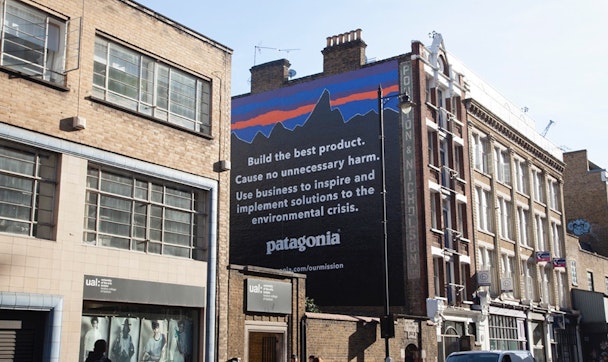Analog is dead. Long live analog
We’ve created a world in which metrics, not quality, are king. We can measure attention and dwell time, but not empathy, how we felt, or what we learned.

Today you have half a second, if that, before someone chooses to like, swipe, or delete your message. Brands today understand this. The result? A rush to create ever more content faster to connect with today’s always-on audience.
This need to always have something to say, all of the time, is generating a blur of noise that’s easily forgettable. Sometimes I sit back and wonder, Where is this taking us? I see a new generation continually bombarded with ‘glossy’ images and think, When did we lose ‘connection’ in favor of ‘connectivity’?
Twenty years ago, fresh out of art school, I cofounded an agency with my partner, Nick Steel, with the ambition of driving and affecting culture. Our mission remains steadfast: generate brand lust outside the constraints of traditional advertising.
When we worked with Patagonia on driving brand engagement, our goal was to start a valuable conversation, not to have a campaign that everybody liked.
While the objective was to achieve widespread reach, we didn’t start with digital. We considered how to bring their main point of difference — their values — to life and we found the answer in cans of paint and brick walls. Overnight, in the middle of Shoreditch, we brought their mission to the fore by painting it on a number of walls.
There’s something uniquely honest about taking the time to do something by hand. In the age of digital bombardment, I believe the printed word (or in this case, the painted word) has credence. And, pretty quickly, word got out; it blew up online, but the starting point was simple — and analog.
Walking the streets today you can still catch a glimpse of an old hand-painted ad from yesteryear. It’s this statement of permanence, in a world where everything is throwaway, that cuts through.
When Pepsi had with the ambition to create a digital campaign based on a one-word brief ‘unbelievable,’ we turned to 2,100 ping pong balls, 1,650 mousetraps and 120 metres of LED lights. We took the brief and saw this as an opportunity to create a fun experiment on a massive scale.
It took one failed attempt, 42 people on set hoping to make it go right, and a whole lot of blood, sweat, and tears to painstakingly create an installation that aimed to re-create the process of nuclear fission.
The message wasn’t immediately obvious and demanded that people took time to consider the connection. But it was there, and while some media outlets called us insane, it led to more than 30 million hits across all media.

As with anything in life, from food to fashion, when you start to create more of it — and at a lower cost — the quality dilutes. People begin to cut corners and they lose a strong point of difference and a distinct identity. I see more and more brands jumping on this wagon and they all end up with less interesting things to say.
Quite frankly, it’s boring.
I want to create work that makes people slow down, makes them look at things in a different way, and ultimately, to create experiences that are deeply human. In an age where everything is presented in the perfect filter, I want to scratch beneath the surface and say something honest and real.
Some say, “Analogue is dead,” but I say, “Long live analog!” I believe that brands today have an enormous opportunity to step away from the race to the bottom, churning out reams of digital content that only adds to the noise. While new technologies provide us with infinite reach, we are still human. What we really connect with, and remember, are big ideas said in a simple, compelling way.
The real trick lies in marrying the two: the digital and the analog; the old and the new school. In a world where everything has the potential to become a big blur, embracing analog, but very much with digital in mind, has the ability to engage people for longer, to present new ideas, and to make people think.
The reality is, if people connect with an idea, they will share it. But the point is to focus on the message and the human connection and let the rest happen organically. Because, if you’re not making people stop, think, and ponder, why bother? The rest is just noise.
Julian Harriman-Dickinson is executive creative director and cofounder of HarrimanSteel
Content by The Drum Network member:

HarrimanSteel
HarrimanSteel is an independent creative agency founded in 1999. Culturally-rooted & creatively-driven, helping shape lifestyle and cultural brands such as Patagonia,...
Find out more
